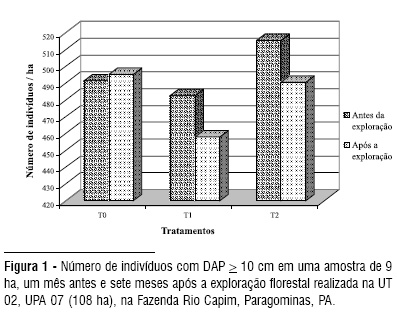The objective of this research was to evaluate changes on floristic composition considering two intensities of harvest in 108 ha of primary forest in the Rio Capim forest management unit, which belongs to Cikel Brasil Verde Madeiras Ltda., in the municipality of Paragominas, PA. Data were collected in two occasions, before logging (2003) and after logging (2004) in 36 50 m x 50 m permanent sample plots, randomly distributed in the area, being 12 in unlogged forest, 12 in logged forest with cutting of boles and 12 in logged forest with cutting of boles plus harvest of coarse woody debris. All trees with DBH > 10 cm were registered. Before logging occurred 4469 trees in the 36 plots (9 ha sample), belonging to 46 families, 138 genera and 228 species. After logging were recorded 4330 trees but two species disappeared (Licaria sp. e Nectandra sp.). Floristic composition, in the two logging intensities, had significant changes due to the reduced impact logging applied in the area. However, there was no changes significant between the two logged areas, indicating that the harvest of the coarse woody debris after logging had not caused significant damage to the remaining forest. Floristic composition changed slightly after logging but changes were not significant among the three communities, suggesting that even with the intensity of logging applied plus the harvest of coarse woody debris the forest could maintain its characteristics very similar to the original forest, in spite of the stock of trees being economically poorer.
Floristic composition; reduced impact logging; permanent sample plot; intensity of logging; Amazonia






